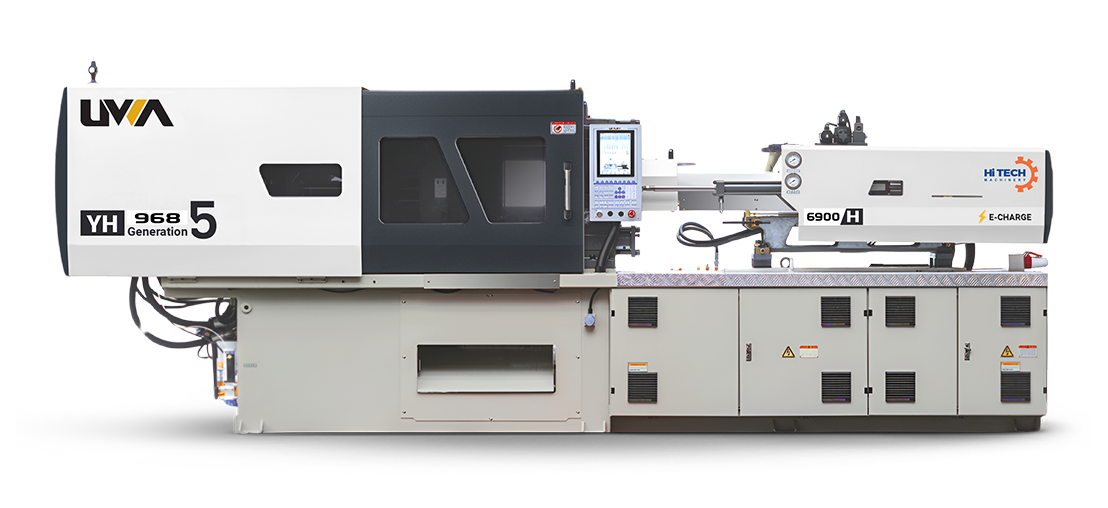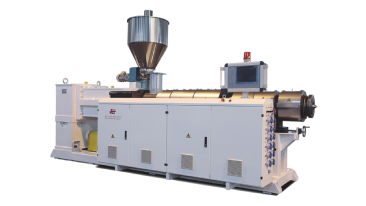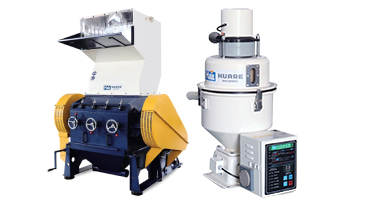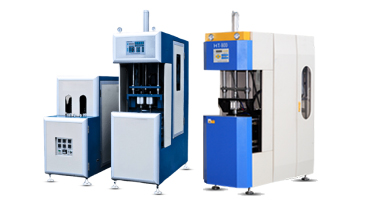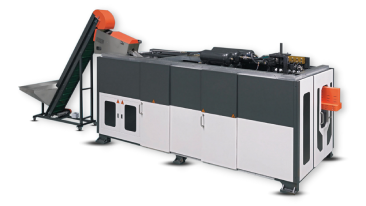Ever considered targeting the medical industry? There are hundreds of mass-used plastic products, especially disposable ones, that have become standard due to hygiene and safety concerns.
If we look closer at this category, syringes clearly lead the market, with more than 16 billion shots administered every day. Most modern medicines are injected, and since each syringe is single-use, the demand is constant and repeated.
Read more to find out how you can tap into this growing market and set up your own disposable syringe manufacturing business. In this guide, we’ll cover the product, its production process, required licenses, investment details, and how HiTech can help you build your setup
What are Disposable Syringes?
A syringe is a simple medical device used to inject or withdraw fluids from the body. It consists of a hollow barrel fitted with a tight plunger and a needle attached at one end.
Reusable syringes were once made of glass or metal and were sterilized after each use. Disposable syringes are single-use versions made from medical-grade plastic. They are designed to be used once and then discarded, which helps prevent infection and ensures high hygiene standards.
Parts of a Disposable Syringe
Disposable syringes may be of various types based on the specific use, but the construction remains. It consists of:
- Barrel: The main body that holds the liquid to be injected.
- Plunger: A piston-like part that moves inside the barrel to draw in or push out the fluid.
- Gasket (Rubber): Ensures a tight seal between the plunger and barrel, preventing leaks.
- Needle: A fine, hollow metal tube attached to the tip of the syringe for injection.
- Hub: The part that connects the needle to the barrel.
- Protective Cap: Covers the needle to maintain sterility before use.
Types of Syringes (Options to Manufacture)
Disposable syringes can be classified based on several factors (function, connection types, and safety features). Some common types include:
- Hypodermic Syringe: The most common and versatile syringe type, available in sizes from 1 ml to 60 ml. Used for intramuscular, subcutaneous, and intravenous injections.
- Luer Slip Syringe: A simple design where the needle is pushed onto the syringe tip. It allows quick attachment and removal, but must be handled carefully to avoid leakage.
- Luer Lock Syringe: An innovative form featuring a threaded tip that locks the needle securely in place. This reduces the chance of accidental dislodgement and leakage, making it safer for critical procedures.
- Insulin Syringe: Small-sized, finely calibrated syringes designed for insulin administration. They are marked in insulin units for accurate dosage and can be used by both healthcare professionals and diabetic patients for self-injection.
- Safety Syringe: Equipped with built-in safety mechanisms to prevent needle-stick injuries. Some have a protective sheath that covers the needle after use, while others retract the needle into the barrel. These are preferred in hospitals to protect healthcare workers.
- Auto-Disable Syringe: It’s designed to be disabled automatically after one use. This prevents reuse and helps control the spread of infections in mass immunization programs or low-resource settings.
- Two-Part Syringe: Normally, a syringe has three parts: barrel, gasket, and plunger. This version has only a barrel and a plunger. It is cheaper but less smooth in use.
Market Size of Disposable Syringe
As per a report by Grand View Research, the global disposable syringes market was valued at around USD 15.81 billion in 2024 and is projected to reach USD 28.27 billion by 2033, growing at a CAGR of 6.8%. The growth is mainly driven by rising healthcare needs, ongoing vaccination programs, and a stronger focus on infection prevention.
The Asia-Pacific region holds the largest market share, around 30% of total consumption. This is largely due to its high population. It is followed by North America and Europe, where advanced healthcare systems and higher awareness continue to support steady demand.
Hospitals and clinics are the main consumers, accounting for over 60% of total usage. The rest comes from home healthcare, where more patients now self-administer medicines, especially insulin for diabetes management. In countries like Pakistan, where diabetes rates are among the highest, syringe use in home settings is growing.
Why is it a Favorable Option for Businesses
Now, one would ask, why should anyone consider syringe manufacturing? Well, that’s because of the constant demand and evergreen nature of this product. It’s something the healthcare industry can’t go without, and the best part, a single shipment/contract can turn the tables for a new manufacturer.
Import Dependence
Many developing countries still rely heavily on imports, covering more than 70% of their syringe needs. Setting up a local manufacturing unit not only reduces import costs but also gives easier access to local tenders and faster delivery times for healthcare suppliers.
Regulatory Push for Single-Use Safety
Health authorities, including the World Health Organization (WHO), strongly emphasize the use of single-use and auto-disable syringes. Those who follow global quality standards have a clear edge in securing government and institutional orders.
Recurring Institutional Demand
Hospitals, government health departments, NGOs, and large distributors buy syringes in bulk through long-term contracts. These are repeat orders that ensure steady business once you’re registered as a supplier.
Low Product Obsolescence
Unlike other medical products, syringes don’t change much in design or material. Once your production setup is in place, it can run for years with minimal updates. That makes it a stable and low-risk investment in the medical manufacturing space.
Syringe Manufacturing: Process and Setup Requirements
If we talk about the basic setup for injection molding, which HiTech Machinery offers as a turnkey solution, it includes a full range of machines and supporting equipment needed to start syringe production.
Injection Molding Machines
Since we’ve already established that a syringe is made up of multiple components – barrel, plunger, gasket, and available in different sizes – you’ll need multiple injection molding machines to make each part.
Standard hydraulic machines can work, but all-electric injection molding machines are more recommended because they meet medical manufacturing regulations.
Disposable Plastic Auto-Disable Syringe Molds
Molds define the shape and size of each syringe part, usually ranging from 1 ml to 10 ml. You’ll need separate molds for barrels, plungers, and gaskets. It’s good practice to keep multiple syringe size molds, sometimes even more than the number of machines, so you can switch them easily during production runs.
Auxiliaries
Supporting equipment, or auxiliary machinery, is just as important as the molding machines themselves. The number depends on how many injection units you start with. A standard setup generally includes:
- Vacuum Autoloader and Hopper Dryer: For feeding and drying medical-grade polypropylene granules.
- Crusher/Granulator: To recycle runner waste and defective parts.
- Air-Cooled Chiller and Compressor: For temperature control and pneumatic support in production.
- Automatic Assembly Line Machine: For assembling syringe parts and auto-disable mechanisms.
- Rotary Printing Machine: For graduation marking on the syringe barrel.
- Syringe Blister Packaging Machine: For individual sterile packaging.
- ETO Sterilizer Machine: For sterilizing finished syringes before shipment.
Licenses and Regulations for Medical Manufacturers
The only challenging part that really distinguishes disposable syringes from other plastic products (toothbrushes, dental flosses) is the approval process from the regulatory authorities. Every country has its own strict rules for medical-grade manufacturing, and meeting them is a must before starting production.
You’re required to have a manufacturing license from the national drug or medical device authority, along with compliance with a few key standards, usually ISO 13485 (Quality Management System for Medical Devices) and ISO 7886 (Syringes for Medical Use). These ensure your setup, production, and final product meet international safety and quality benchmarks.
In Pakistan, this process is handled by the Drug Regulatory Authority of Pakistan (DRAP). DRAP oversees the registration, licensing, and quality control of all medical device manufacturers in the country. Their official document provides detailed guidelines on documentation, space requirements, health guidelines, and product testing for setting up a medical device manufacturing plant.
Production Estimate and Investment Required
The production from the scale of setup you’ve, mold cavities, and the injection machine itself. One of the setups we proposed to a client had the following production stats:
| Sr. no | Items | Cavity no. | Cycle Time (seconds) | Production per Hour | Production in 16 hours | Production in 26 days |
| 1 | 3ml Plastic Auto Disable Syringe Barrel Mold | 48 | 18 | 7,855 | 125,673 | 3,267,491 |
| 2 | 3ml Plastic Auto Disable Syringe Plunger Mold | 48 | 18 | 7,855 | 125,673 | 3,267,491 |
| 3 | 3ml Plastic Auto Disable Syringe Gasket Mold | 128 | 25 | 15,360 | 245,760 | 6,389,760 |
| 4 | 5ml Plastic Auto Disable Syringe Barrel Mold | 48 | 18 | 7,855 | 125,673 | 3,267,491 |
| 5 | 5ml Plastic Auto Disable Syringe Plunger Mold | 48 | 18 | 7,855 | 125,673 | 3,267,491 |
| 6 | 5ml Plastic Auto Disable Syringe Gasket Mold | 128 | 25 | 15,360 | 245,760 | 6,389,760 |
| 7 | 10ml Plastic Auto Disable Syringe Barrel Mold | 32 | 18 | 5,236 | 83,782 | 2,178,327 |
| 8 | 10ml Plastic Auto Disable Syringe Plunger Mold | 36 | 18 | 5,891 | 94,255 | 2,450,618 |
| 9 | 10ml Plastic Auto Disable Syringe Gasket Mold | 96 | 25 | 11,520 | 184,320 | 4,792,320 |
Achieving such high-volume production with an almost fully automated syringe manufacturing setup, including complete packaging, comes with considerable investment. A facility equipped with five injection machines and molds for various syringe sizes is estimated to cost around USD 800,000.
Alternatively, a customized setup with fewer machines and customized production capacities can be designed to meet specific operational needs and budget constraints.
HiTech Machinery Support in Syringe Manufacturing Line
HiTech Machinery provides a turnkey solution for syringe manufacturing, including the machines, auxiliaries, labelling, and packaging – a complete production line.
Besides providing full support in project installation, we also offer:
- Local warranty
- Regular maintenance checks
- Spare parts supply
Contact HiTech Machinery today and take your first step into the syringe manufacturing industry.
